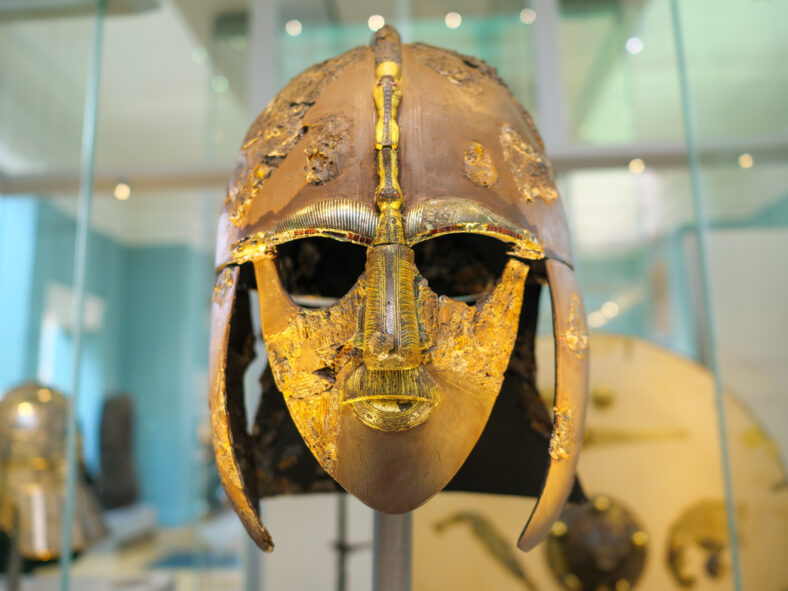Doubts Are Being Cast On Where The Sutton Hoo Helmet Originated From Following A New Discovery

About two years ago, a small metal stamp with engravings was uncovered in a field amid the ruins of a metal workshop on the Danish island of Tåsinge.
The images on the stamp are similar to those found on the Sutton Hoo helmet, which was unearthed in 1939 from an Anglo-Saxon ship burial site in Britain.
For a long time, archaeologists thought the helmet originated in Sweden, but now, the new discovery suggests that it might have actually come from Denmark instead.
In the late 1930s, more than 260 items, including the famous helmet, were discovered at an estate in Suffolk, England.
There were also gold coins, horse bridles, armor, military equipment, elaborately decorated weapons, and an 88-foot-long burial ship that once held human remains and grave goods like jewelry, tableware, and musical instruments. They all date back to the 6th or 7th century C.E.
It is believed that Sutton Hoo was the final resting place of Raedwald, a king of the Anglo-Saxon kingdom of East Anglia who died around 624 C.E. The site was compared to the Valley of Kings in Egypt.
The helmet was made of iron and tinned copper alloy. It was found in multiple pieces. After restoration, it was put on display at the British Museum, where visitors today can view it.
The helmet is covered in beautiful engravings of bears, a dragon, and warriors on horseback. Similar motifs were on ancient helmets from eastern Sweden, so archaeologists assumed that the Sutton Hoo helmet originated there as well. It could’ve been an heirloom or diplomatic gift to Raedwald.
However, the recently discovered metal stamp, known as a “patrice,” suggests that the helmet may have come from Denmark.

Sign up for Chip Chick’s newsletter and get stories like this delivered to your inbox.
Researchers noted many similarities between the two artifacts, such as the cuff on the warrior’s wrist, the warrior’s hair, and the shape of the horse’s harness. In addition, the horses’ ears, noses, manes, and tails are nearly identical in appearance.
The motifs look so alike that they were likely not only made in the same place but by the same craftsmen, too. If the Sutton Hoo helmet really did come from Denmark, it could change our understanding of power dynamics in Northern Europe during the 7th century.
Denmark may have had more influence on the region than previously thought. It may have even been one of the leading powers, alongside England and Sweden.
But not everyone is certain that the stamp is proof of the Sutton Hoo helmet’s origins in Denmark. It is possible that the stamp originated elsewhere and was then transported to Denmark.
Researchers hope to perform 3D scans of the helmet and stamp for more details. Meanwhile, the metal stamp will be displayed at the National Museum of Denmark in Copenhagen.
More About:News